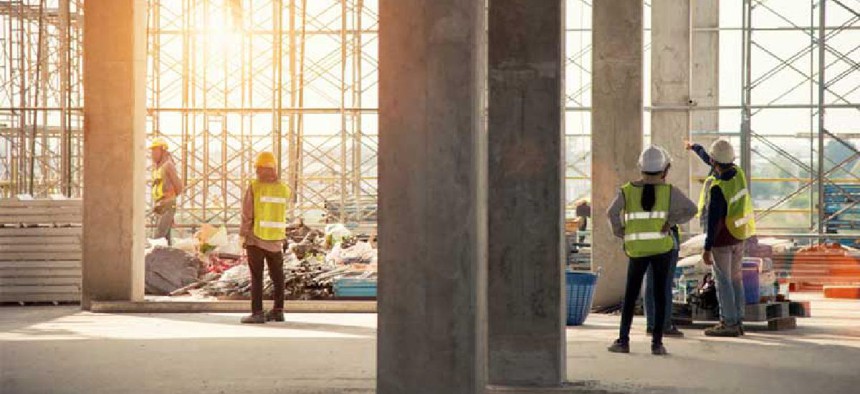Can urban mining help cities improve resiliency?

Philadelphia is working on an urban mining tool that analyzes data from construction permits and building trends to identify when and where builders can find recycled materials.
When buildings and infrastructure are demolished, materials like bricks, wood, steel, copper, aluminum and cement can be repurposed for new construction. Recycling these materials can shorten supply chains, increase a city’s resiliency and reduce the environmental impact of creating new materials.
Philadelphia is making this “urban mining” easier with software that predicts the supply of such resources in existing buildings as well as the demand for recycled construction materials.
SmartCityPHL, the city’s initiative to improve government services through technological innovation, has partnered with Netherlands-based Metabolic to pilot an urban mining tool. It analyzes building trends and data from construction permits to determine the demand for construction materials, making the supply of used materials more predictable. Philadelphia plans to use the urban mapping tool “to quantify the material, environmental and financial benefits of preserving high-value construction materials when buildings are deconstructed and reusing these materials in new building projects,” city officials said.
While salvage and recycling operations already save some of materials from demolition projects, the city and Metabolic are working to make that possible on a much larger scale.
In 2016, Metabolic began work on a urban mining database for its home city of Amsterdam, collecting data from government sources to find the address, construction data, function, height, footprint, square footage and status of existing buildings. To identify the metals used in construction, the company first tried to get data from builders, but such information was usually unavailable. In those cases, Metabolic generalized the amount metal content in a building based on its type and age and added that information to the database. Esri’s ArcGIS was used to visualize the data.
Digging into the Amsterdam planning office’s renovation and construction agenda helped the company estimate the location and amount of copper, aluminum and steel that would be available to mine.
“The added value of urban mining over ‘just’ recycling is the planning element: instead of being reactive, it is possible to be proactive once knowledge is available about the location and amounts of materials in the urban mine, insight in supply chains, insight in the planning of relevant activities and in construction and demolition plans for the municipality,” the company explained in its paper detailing the Amsterdam project. “The local level is important for this type of knowledge, and local governments can play an essential role in it.”
Metabolic’s analysis has already identified new opportunities for entrepreneurship and innovation in Philadelphia in building design, construction, deconstruction and material management, city officials said. The company also outlined city and state policies that could make the reuse of building materials easier and more economical.
The urban mining initiative came out of Philadelphia’s Pitch & Pilot program that encourages innovative ideas that could help the city meet its goals of saving money and improving services delivery.
Urban mining has also been studied in Charlotte, N.C. Also working with Metabolic, the city’s Circular Charlotte strategy lays out an economic roadmap that aims to generate zero waste, generate thousands of jobs and bring in billions in revenue.
Boulder, Colo., worked with Metabolic on its Climate Mobilization Action Plan that maps all the materials being consumed, transformed and wasted in Boulder, allowing the city to more easily find opportunities for creating less waste.
In the coming year, Philadelphia officials said the SmartCityPHL team will work with partners in the public and private sectors to keep more building waste out of landfills and provide more opportunities for sustainable jobs in the city.
NEXT STORY: Why the CX journey matters






